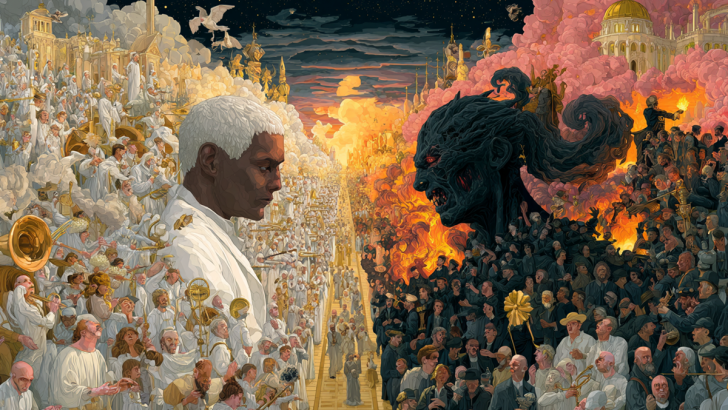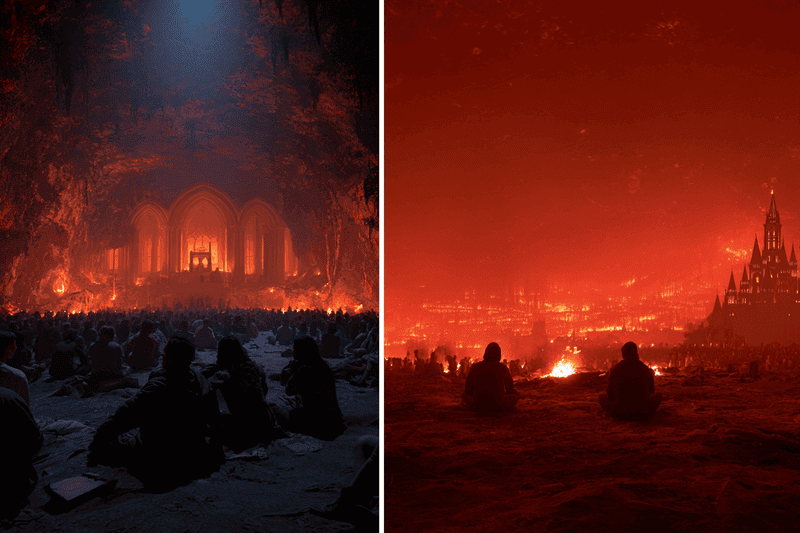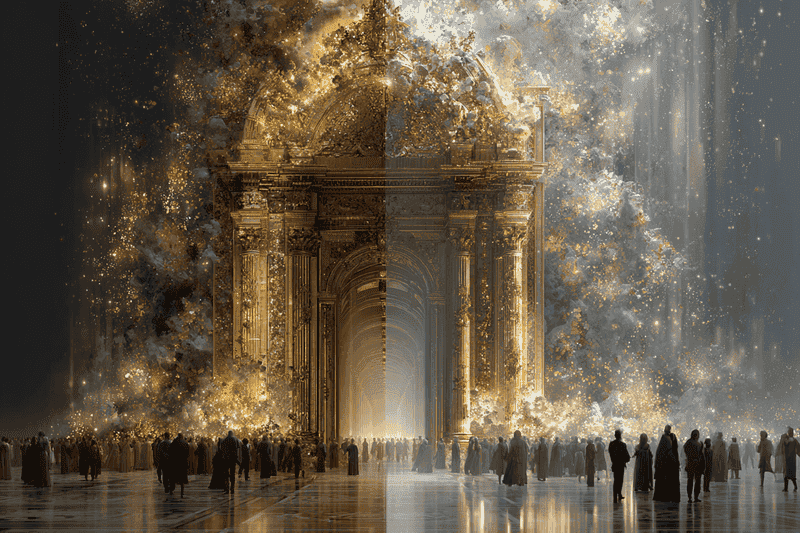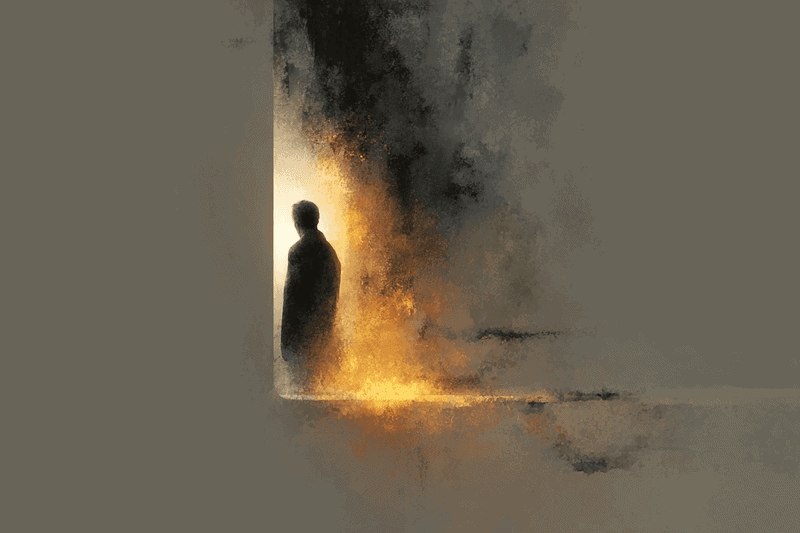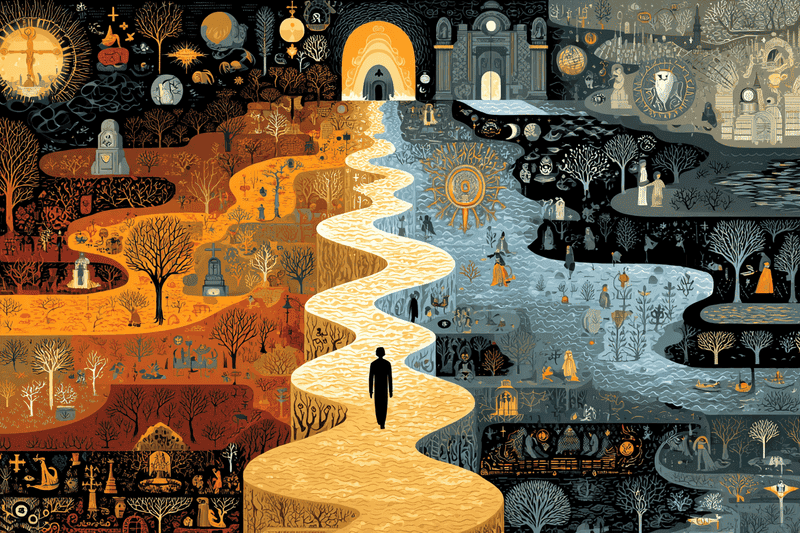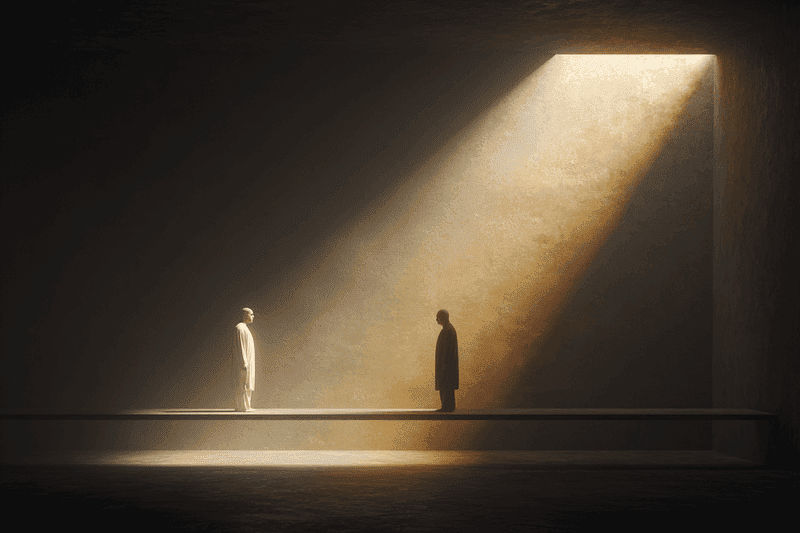Heaven and hell are topics that spark curiosity across cultures and religions. Many of us have formed ideas about these places based on movies, books, or childhood stories.
But how much of what we believe is actually true? Let’s explore some common myths about heaven and hell that might surprise you.
1. Harps and Clouds: The Boring Heaven Myth
The image of heaven as an endless choir practice with angels floating on clouds has become a cartoon staple. In reality, many religious texts describe heaven as a place of profound joy and fulfillment, not monotonous harp-playing.
Biblical descriptions include references to a new earth with meaningful activities and relationships. The concept of eternal rest doesn’t mean eternal boredom—it suggests freedom from suffering and pain.
Different faith traditions envision heaven as a place where human potential reaches its fullest expression. This includes creativity, learning, exploration, and deepening relationships—hardly the boring existence many imagine!
2. Satan’s Playground: Who Really Rules Hell?
Red-skinned devils with pitchforks supervising torture chambers—this popular image of hell misses the mark according to most theological traditions. Satan isn’t hell’s manager but one of its prisoners.
Many religious texts describe hell as a place of punishment for fallen angels including Satan himself. The notion of demons gleefully torturing humans contradicts the understanding that hell represents divine justice, not demonic authority.
This misconception likely stems from medieval artwork and literature like Dante’s Inferno that dramatically portrayed hell. Modern religious scholars emphasize that whatever hell might be, it’s not a kingdom where evil reigns supreme.
3. Party Central: The Myth of Hell as a Fun Place
“See you in hell!” says the villain with a wink, suggesting a rowdy afterparty awaits. Popular culture often portrays hell as where the “cool people” end up—a place for rebels and rule-breakers to continue their wild ways.
Religious texts paint a drastically different picture. Far from a party atmosphere, traditional descriptions emphasize isolation, regret, and separation from love and goodness.
This misconception likely persists as a way to cope with fear of punishment. The idea of reuniting with friends for eternal partying makes hell seem less frightening, but it contradicts the fundamental concept of hell as a state of suffering and separation.
4. The Everyone Goes to Heaven Myth
“All dogs go to heaven” extends beyond pets in popular thinking. Many believe everyone eventually ends up in heaven regardless of beliefs or actions during life. This universal salvation idea offers comfort but conflicts with most religious teachings.
Major faiths typically outline specific paths to salvation. Christianity emphasizes faith in Jesus, Islam focuses on submission to Allah and good deeds, while Judaism highlights righteous living and following God’s commandments.
The appeal of universal salvation is understandable—who wouldn’t want everyone to experience eternal happiness? However, this view often overlooks religious concepts of justice, free will, and the consequences of one’s choices during life.
5. The Temporary Punishment Theory
Some believe hell is like a cosmic time-out corner—you serve your sentence and eventually graduate to heaven. This comforting idea suggests all souls ultimately find redemption.
Traditional interpretations in many faiths present a different view. Christianity’s mainstream denominations teach that hell is eternal, though some theologians throughout history have argued for universal reconciliation.
This temporary punishment concept gains popularity partly because an eternal hell raises difficult questions about divine mercy. The tension between justice and mercy creates space for varying interpretations, but the temporary hell concept remains minority view in most established religious traditions.
6. The Good Person Pass: Earning Heaven Through Deeds
“I’m a good person, so I’ll go to heaven.” This common belief suggests heaven operates on a moral point system—collect enough good deed tokens and you’ve earned your cloud. Many find this logical and fair.
Christianity specifically challenges this view with its emphasis on grace through faith rather than works. Other traditions like Buddhism focus on breaking the cycle of rebirth rather than earning paradise through good behavior alone.
The moral scorecard approach simplifies complex theological concepts about human nature and divine standards. While living ethically matters in most faith traditions, the idea that heaven is simply a reward for good behavior misses deeper spiritual dimensions many religions emphasize.
7. Streets of Gold: Heaven’s Material Wealth Misconception
Golden streets, pearl gates, and mansions for everyone—heaven is often imagined as a luxurious gated community in the sky. This material-focused view misses the deeper spiritual significance behind these symbolic descriptions.
Ancient religious texts used precious materials to convey value and perfection, not literal architecture plans. The emphasis in most traditions centers on communion with the divine and spiritual fulfillment rather than acquiring cosmic real estate.
When religious texts mention precious materials, they’re typically using metaphors to describe something beyond human experience. The focus on heaven’s material wealth reflects our earthly preoccupations more than authentic religious teaching.
8. The Hellfire Obsession: Is Hell Mainly About Physical Torment?
Lakes of fire, burning sulfur, and endless physical torture dominate popular hell imagery. These vivid pictures stem largely from medieval art and Dante’s Inferno rather than religious texts alone.
Many theologians suggest hell’s true nature may involve mental and spiritual suffering—the pain of separation from God and goodness. Physical descriptions might be metaphors for deeper spiritual realities that are difficult to express in human language.
C.S. Lewis famously described hell as “locked from the inside”—suggesting self-imposed separation rather than divine torture chambers. This perspective shifts focus from God as torturer to respecting human freedom to reject divine love.
9. Instant Judgment: The Immediate Afterlife Myth
Movies often show characters dying and immediately appearing at heaven’s gates for judgment. This instant transition overlooks important nuances in many religious traditions.
Several faith perspectives include intermediate states or waiting periods. Catholicism teaches about purgatory, Judaism has varying concepts about what happens immediately after death, and some Protestant denominations suggest a “soul sleep” until final judgment.
Eastern Orthodox Christians believe in a 40-day journey of the soul, while some Eastern religions describe complex processes between death and rebirth. The immediate judgment concept simplifies diverse theological traditions that often present more complex views of the afterlife timeline.
10. The One-Size-Fits-All Punishment Myth
The notion that everyone in hell receives identical punishment contradicts nuanced teachings in many religious traditions. Dante’s Inferno popularized the concept of punishment fitting the crime with its elaborate circles of hell.
Many theological traditions suggest variations in consequences based on knowledge, intentions, and actions during life. Jesus himself spoke of “few blows” versus “many blows” in Luke 12, suggesting degrees of accountability.
This understanding aligns with our innate sense of justice—that consequences should be proportional to actions. While the exact mechanics remain mysterious, the flat “everyone suffers equally” concept oversimplifies complex religious teachings about divine justice.

